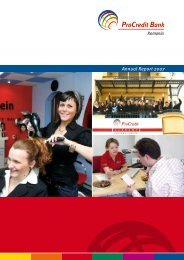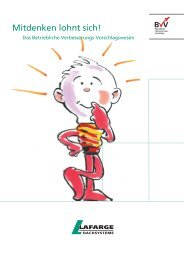Annual Report 2007
Annual Report 2007
Annual Report 2007
Create successful ePaper yourself
Turn your PDF publications into a flip-book with our unique Google optimized e-Paper software.
Political and Economic Environment<br />
Mozambique’s economic performance in <strong>2007</strong><br />
was very encouraging. The economy grew by an<br />
estimated 7%, slowing down only slightly from<br />
the 9% achieved in 2006. Following years of<br />
depreciation, the local currency started to gain<br />
against the US dollar and the South African rand.<br />
By September, the metical had appreciated by<br />
1% against the dollar and by 2% against the rand.<br />
<strong>Annual</strong> inflation was stable at around 12%. In December,<br />
Standard & Poor’s raised Mozambique’s<br />
country rating from B- to B+.<br />
Despite these very promising macroeconomic indicators,<br />
Mozambique remains one of the poorest<br />
countries in the world, ranking 172nd out of 177<br />
in the UNDP Human Development Index. Tax income<br />
remains relatively low, leaving the Mozambican<br />
budget still heavily dependent on donor<br />
funding. Public expenditure in 2008 is projected<br />
to reach about USD 3.6 billion, but revenues from<br />
taxation and other domestic sources are forecast<br />
to cover only 44% of that total. The deficit of just<br />
over USD 2 billion will have to be bridged almost<br />
entirely with foreign aid.<br />
Direct budget support will constitute 49% of total<br />
foreign aid in 2008, and 51% will be earmarked<br />
for specific programmes and projects. To avoid<br />
incurring unsustainable debt, the government<br />
has ensured that over two thirds of this foreign<br />
aid consists of grants, with less than one third<br />
being provided in the form of loans.<br />
Mozambique suffers from a growing trade deficit,<br />
and over three quarters of its export earnings<br />
come from just three products – the aluminium<br />
ingots produced at the MOZAL smelter on the outskirts<br />
of Maputo, the natural gas piped from Inhambane<br />
province to South Africa, and electricity,<br />
mostly produced at the Cahora Bassa dam on the<br />
Zambezi and sold to South Africa and Zimbabwe.<br />
Agriculture is still the predominant sector of the<br />
economy, employing roughly 78% of the population.<br />
This sector has considerable growth potential,<br />
but Mozambique’s farmers will probably face<br />
increasing competition when trade is liberalised<br />
within southern Africa in 2008 under the South<br />
African Development Community (SADC) treaties.<br />
Exploration of titanium-bearing heavy sands be-<br />
gan this year at the Moma Mines near Nampula.<br />
Further large-scale mineral extraction projects<br />
are due to be launched soon in Chibuto, in Gaza<br />
province.<br />
2008 is set to be a momentous year for the region<br />
with the official launch of the SADC Free<br />
Trade Area slated for August. In some African<br />
countries, including Mozambique, there are not<br />
enough qualified people or resources to provide<br />
the momentum required to make decisive progress<br />
towards regional integration. South Africa<br />
accounts for about 72% of the combined GDP of<br />
the SADC countries, whereas Mozambique contributes<br />
only 2%. Government leaders and analysts<br />
have appealed to the Mozambican industrial<br />
sector to prepare for the challenges presented<br />
by free trade. The sector must become more competitive<br />
in order to ensure that the country is not<br />
swamped with imports.<br />
Financial Sector Developments<br />
M a n a g e m e n t B u s i n e s s R e v i e w 1<br />
Developments in the financial sector reflected<br />
the overall economic situation. The total assets<br />
of the banking sector grew by 30%, reaching<br />
USD 3.4 billion. About 89% of total assets were<br />
concentrated in four of the country’s 12 supervised<br />
financial institutions. Asset growth was<br />
driven by a rise in deposits of 37%. Credit to<br />
the economy rose much less rapidly than deposits,<br />
increasing by 13%. The banking sector<br />
was highly liquid, with a deposit-to-loan ratio of<br />
192% as of December <strong>2007</strong>, compared to 162%<br />
in 2006. Banks invested their excess liquidity<br />
in treasury bills and government bonds. The<br />
average return on equity in 2006 was 31.3%<br />
for the banking sector as a whole, including<br />
commercial banks, the central bank and<br />
microfinance banks.<br />
The Government of Mozambique views the financial<br />
system as essential for promoting the country’s<br />
economic development. In <strong>2007</strong> the Bank of<br />
Mozambique (BM) promoted increased access to<br />
financial services throughout the country, especially<br />
in the areas that are less well developed but<br />
have great potential for growth and business.<br />
The banks have responded to this initiative, expanding<br />
their networks and financial services to
















